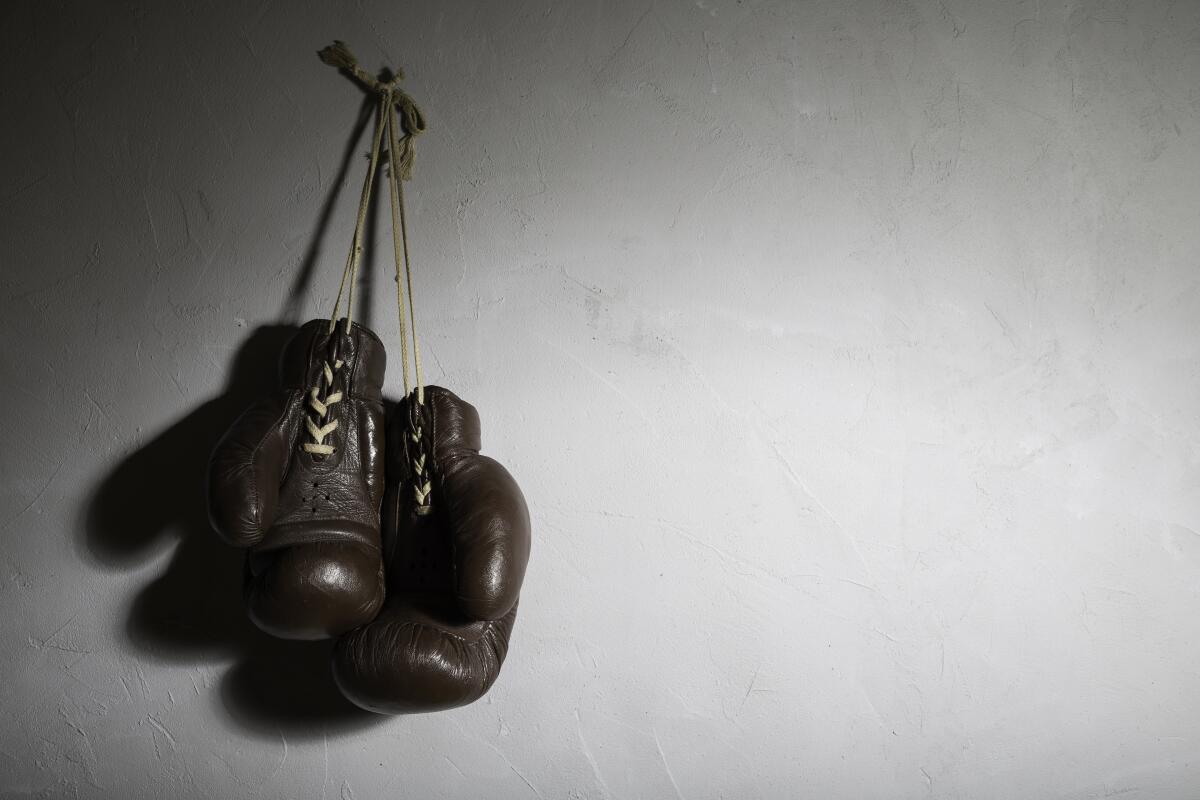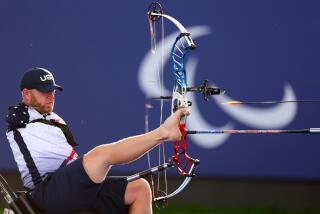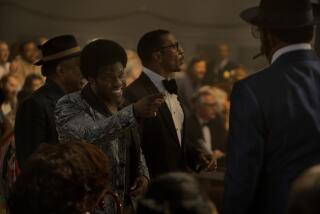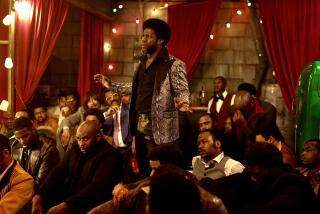Opinion: A white cane and 12-ounce gloves. How I learned to box as a legally blind man

I walked into a boxing gym for the first time at 46 years old. Walked in with 20 pounds I’ve added on since COVID and kids. Walked in with little stamina, marginal coordination and bucketloads of fear. I’d halfway convinced myself before ever stepping through the doors that I probably couldn’t do this after all.
Walked in with all that and a white cane tapping on the floor.
Yeah. A legally blind man trying to learn how to box.
There’s no way this will ever work out, I thought. But let’s try it anyway.
I was born with optic nerve hypoplasia, which is essentially the underdevelopment of the optic nerve, and it means that I navigate the world with severe tunnel vision. Most fully sighted folks experience 180 degrees of peripheral vision, and I have about 25 degrees with both eyes combined. The area I can’t see isn’t fuzzy, it isn’t dark and it doesn’t shimmer with colors. Put your finger on the back of your head and describe what the vision back there is like. There’s nothing there, right? Apart from the 25 degrees of sight that I have, that’s what my periphery is like.
What I quickly learned about boxing — from my very first session where I went over general footwork and the six punches that make up the basics — is that unlike in other sports, the mind is constantly engaged. I have tried running and weightlifting and found them deathly tedious. The body does the work while the mind is stuck in stasis. But when you’re looking at someone over your gloves, trying to hit them and not get hit in return, or even just remembering the order of the nine punch/defense combo your coach just assigned, the brain sings alongside the body.
The number of times I’ve heard well-intentioned people exclaim something like, “That’s amazing! Do your other senses get heightened?” No. I’m still working from a profound deficit, a deficit that my coaches are teaching me to defensively shrink as little as possible.
I stare at my opponent’s chest — the chest telegraphs the most information about what the arms and the legs are about to do. I offer up my shoulders as often as I can, and I try to keep my right hand pinned to my cheek as much as possible, so it’s only a matter of inches for me to lift my glove and block any incoming left hooks.
Hooks are the toughest because of the way they loop in from outside my field of vision. When I spar with my coaches (and we’re talking very light sparring at this point), my bag of tools isn’t very deep yet. I’m still miles away from feeling relaxed or natural. The biggest challenge is staying patient with myself, and recognizing that every day I practice, every day I accept criticism and correction, every time I put wraps on my hands and try to learn, that’s a definable victory.
One of my coaches tells me: “Power doesn’t win it, Keith.” We’re doing mitt work, and I keep frontloading, leaning too far forward in my punches, trying to add some imagined extra bit of oomph. But I’m anchoring that front foot, and it’s costing me balance and the ability, a second later, to move, to pivot. It’s basic stuff, but it’s a bad habit that keeps coming up.
“Speed trumps power. You get your hand in their face as fast as you can,” my coach says, “then you get it back to your face. That’s it.”
The nice thing about all this? It’s all stuff that newbies do. Reflexes, muscle memory, technique and skill sets — you build all of it through practice and repetition.
The true surprise came with the realization that I’ve been unilaterally treated with respect at this gym, from coaches and other boxers alike. My impairment — or rather, the fact that I’m trying to learn this sport with such an impairment — is met with about five seconds of polite admiration. Once that’s over, and we’ve figured out what accommodations need to be made for whatever drill or combo we’re doing next, I become just another newbie with bad footwork, a guy with a sometimes-decent cross who keeps dropping his elbow in that rear hook.
Every class, every session, is an act of quiet inclusivity.
There’s no grand plan with all this. I won’t be doing any exhibitions. I’m not set on sparring some of the lethal people that populate this gym. It’s a sport, it’s exercise and it works the mind and clears it simultaneously. The challenge of trying to hit someone while not getting hit remains vastly, wildly fun, but ask me again after I’ve eaten a few liver shots.
The people I train with have consciously made room for me in a sport that I never thought would be accessible to me. I have so far to go, and I feel tremendously grateful that I moved through the fear that first day, walking into the gym with my gloves and my white cane.
Keith Rosson’s newest novel, “Fever House,” will be published by Random House in August. He boxes at St. Johns Boxing in Portland, Ore.
More to Read
A cure for the common opinion
Get thought-provoking perspectives with our weekly newsletter.
You may occasionally receive promotional content from the Los Angeles Times.










